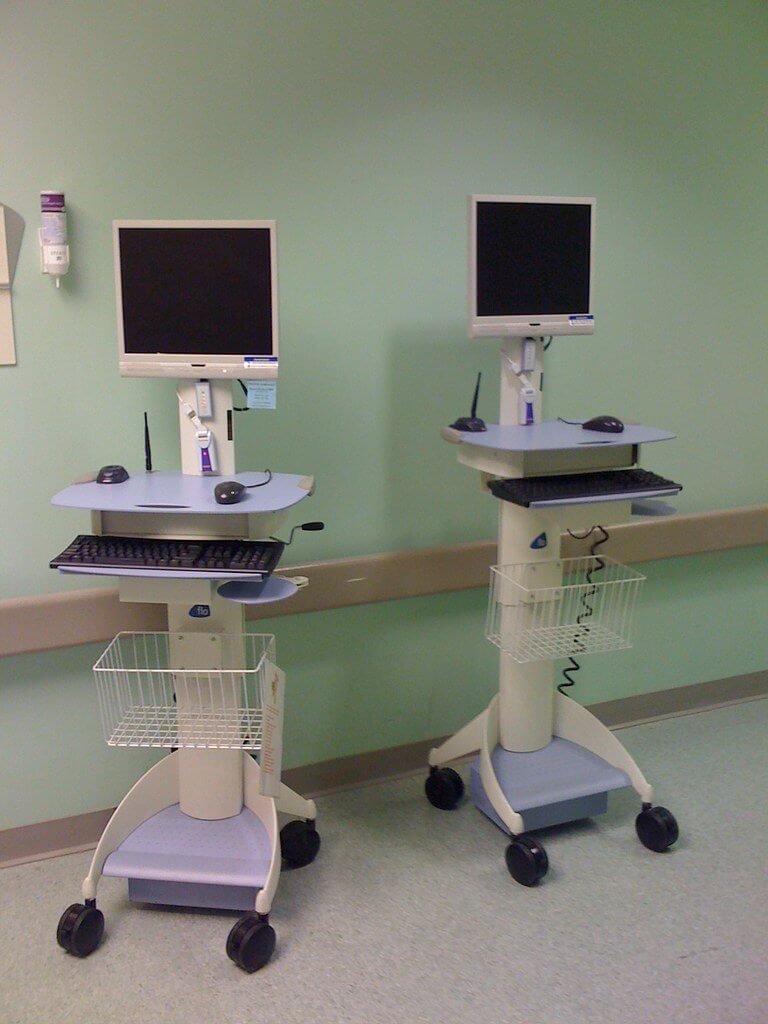Just about every hospital and healthcare facility in the country uses medical carts. These valuable pieces of equipment make it easier to provide exceptional patient care while simultaneously improving response rates and increasing efficiency. There are different kinds of medical carts available to meet each healthcare facility’s needs, so read on to find out about seven types of medical computer carts and their intended usage before placing an order.
1. Point-of-Care Carts
A point of care (POC) cart, also referred to as a point of care medical trolley, is used to administer diagnostic tests. Each cart features a computer workstation to allow access to the facility’s electronic database, which reduces the risk of human errors and improves a hospital’s data management. POC carts also feature storage compartments to safely transport medical test materials to labs for testing.
2. Medication Carts
Medication carts have more storage space than other types of medical trolleys but still generally feature computer workstations to ensure easy access to patient records and make it simpler for the administering nurses to accurately record medication use. Medication carts usually have added safety features not seen on other trolleys, including self-locking drawers.
3. Code Carts
Code carts come in many shapes and sizes, but what they all have in common is that they’re designed for use during emergencies that require a rapid response. Code carts must be exceptionally well organized so that doctors and other healthcare providers can easily find all the medical supplies required to help a patient in crisis.
4. Bedside Carts
The primary purpose of a bedside cart is to make it easier to treat patients during their recoveries. A good bedside cart will be lightweight, easy to maneuver, and feature locking drawers to keep medical supplies safe if doctors or nurses must leave the cart in a patient’s room.
5. Anesthesia Carts
Anesthesia carts are rolling trolleys designed to store the tools required to administer anesthesia. They feature locking drawers to keep the potentially lethal medications used by anesthesiologists safe and organized.
6. IV Carts
IV carts are usually made from heavy-duty materials since they must transport heavier loads without creating problems with transport. Each cart usually has a specialized drawer system that makes it easier to remove IV fluid bags quickly from the front of the cart and insert them into the back.
7. Treatment Carts
Treatment carts feature specialized compartments designed to remove hazardous waste safely without risking the contamination of other areas of the facility. The carts can be customized to contain locking doors at the bottom vs. open doors, additional tubs for better organization, and other features that make it easier to access supplies or keep hazardous waste safe. Treatment carts can often be found not just in hospitals but also in long-term care facilities, clinics, doctor’s offices, and nursing schools.
The Importance of Buying Quality Carts
No matter what type of medication carts a purchasing manager needs to buy, it’s very important to seek out products made from quality materials by specialized manufacturers. Medical carts must be durable, maneuverable, easy to clean, and customizable to meet a facility’s specific needs. Working with a specialized manufacturer or vendor also means gaining access to experienced industry professionals who can answer questions, suggest customizations, and provide product support after the order has been placed.

